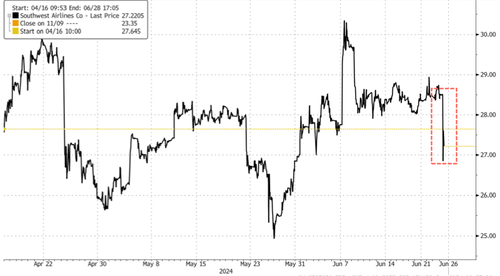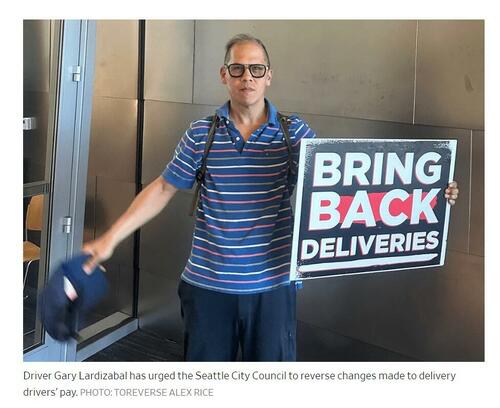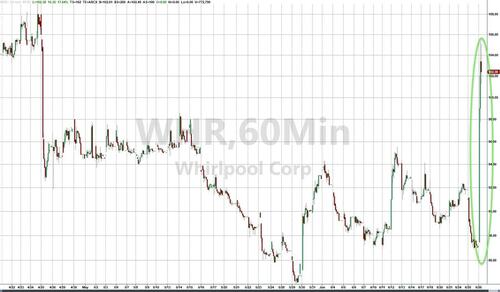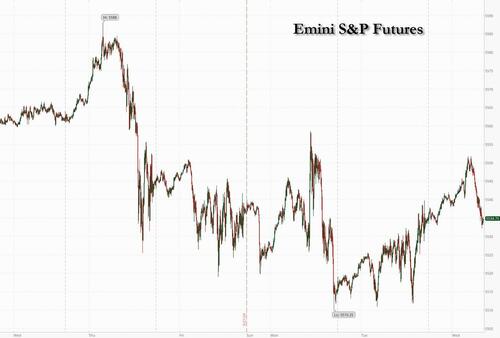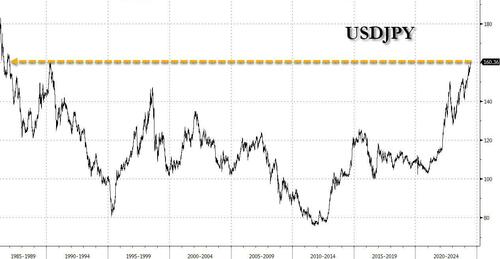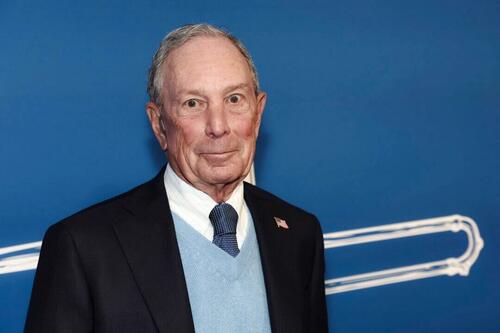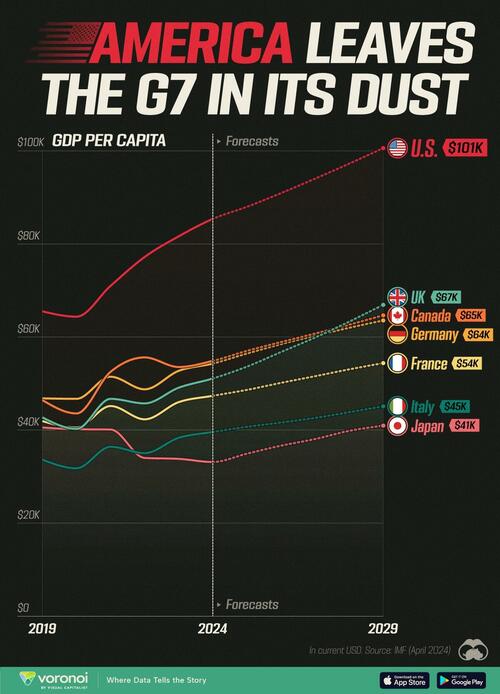Authored by Lee Fang via RealClearInvestigations,
Vice President Kamala Harris has long cast herself as a fearless pioneer of efforts to fight for social and environmental justice.

“When I was elected DA of San Francisco,” Harris told a gathering at the Georgia Institute of Technology in Atlanta last year, “I started the first environmental justice unit of any DA’s office in the country.”
In her telling, the San Francisco District Attorney formed the special environmental justice unit in the early 2000s especially to protect the long-neglected community of Bayview Hunters Point, a predominantly African American and impoverished part of the city, which had become “a dumping ground for people from other places.”
In dozens of speeches and interviews in recent years, Harris has bragged that she went “after polluters” and protected minority communities in San Francisco in novel ways as a local prosecutor.
The narrative has become a bedrock of Harris’ political identity. She featured her DA environmental justice crimes unit in her first statewide television advertisement and she rarely missed an opportunity to tout the history during her presidential bid, during which she promised similar initiatives if elected.
But records from the San Francisco District Attorney’s office and interviews with local environmental advocates point to a different, far less ambitious record.
“We’re unaware of any major or semi-major environmental justice work done by Harris in Bayview Hunters Point, including on the Hunters Point Shipyard Superfund site,” said Bradley Angel, executive director of Greenaction for Health and Environmental Justice, a progressive watchdog group that seeks to “to promote environmental, social, economic and climate justice.”
Steve Castleman, an attorney with UC Berkeley’s Environmental Law Clinic, who has worked on urban pollution issues in the Bay Area, also noted that he did not know of any significant Harris environmental justice action as DA.
Far from targeting powerful corporate interests, Harris’ environmental justice unit appears to have filed only a few lawsuits, all against small-time defendants. The targets included a young man who conducted illegal smog checks at a small auto body shop in the city and a left-leaning community newspaper accused of illegally dumping leftover ink in an abandoned lot. Another defendant charged by the unit was a small construction company accused of using adulterated concrete. The major industrial polluters of San Francisco were left untouched under Harris’ watch during her two terms that ended in 2010.
Ernie Apreza, Harris’ spokesperson, did not respond to repeated requests for comment.
Despite its green reputation, San Francisco has a fraught history of urban pollution, and Bayview Hunters Point, a roughly four-square-mile area with about 35,000 residents, is a notoriously polluted area. The community, once an industrial hub and a beacon for black workers who flocked to the city for jobs during World War II, is filled with contaminated former factories and commercial warehouses. It is currently the site of a scrap metal recycling facility and a notorious sewage treatment plant. Diesel trucks still frequent the neighborhood, often sitting idle and spewing emissions into the air.
Most of all, there is the toxic legacy of the U.S. Navy shipyard that once occupied this area. The Navy once cleaned and repaired its ships used for atomic bomb missions in the Pacific at Hunters Point. The legacy left all types of hazardous waste from these operations in the soil here, a mess that remains unresolved. The city impaneled a special oversight grand jury to investigate the Hunters Point shipyard. The 2022 report concluded that much of the former area is still a wasteland of not only radioactive materials but also industrial pollution featuring “piles of asbestos, ponds of oil, crushed heavy metals, discarded batteries, spilled acids, and other toxic chemicals.”
The federal contractor hired in 2002 to clean up the area at a cost of about $1 billion, Tetra Tech, has faced major delays and a legacy of fraud. Two of its workers were sentenced in 2018 for falsifying records. Despite claims of progress, radioactive materials continue to be found, as recently as December.
Against this backdrop, there were many potential investigative targets for any aggressive campaign to hold corporate polluters accountable. But Harris, records suggest, was far more keen to provide gestures toward enforcement rather than action.
Harris came into office in 2004 after a bitter campaign, during which she had galvanized much of the city’s donor community to back her bid against an unpopular incumbent. As Harris began building a national profile, she confronted anger around decades of neglect over Bayview Hunters Point. The EPA had deemed much of the neighborhood near the shipyard a Superfund site, yet little action had been taken. At a June 2005 rally in front of city hall, representatives of the Community First Coalition, a local group, complained that the neighborhood had become a “toxic soup” of pollution.
In response, Harris unveiled a new initiative, which she promoted to the media. “Recognizing that criminal prosecution can be an effective way to hold polluters accountable and protect the health of our city’s residents,” read a press release from her office, “District Attorney Harris recently established the Environmental Justice Unit.”
Harris hired Davina Pujari, an experienced prosecutor with a history of environmental law and public integrity cases, to lead the office, and soon after its creation, the EJU pursued its first case.
In December 2004, the DA charged Alameda Publishing Corp. – the parent of several Bay Area newspapers catering to the black community, including the Oakland Post, the San Francisco Post, and the Berkeley Tri-City Post – and two men with felony dumping violations. The year before, the company had reportedly hired the men to haul away about 40 five-gallon buckets of red, green, black, and blue ink. In exchange for $500, the men roamed around and found an empty lot in Bayview Hunters Point where they left the unopened buckets. The crime was hardly that of a sophisticated criminal operation: Stickers left on the buckets identified the newspaper owners.
The DA’s office came down hard, charging felonies and fees related to removal of the five-gallon containers. The East Bay Express, a local alt-weekly, noted at the time that the charges were brought just one week after the paper’s longtime owner, Velda Berkley, had completed the sale of the paper. A long legal battle ensued between her and the new owner, Paul Cobb. While reporting that no firm connection could be established, the Express reported that Harris’ mother, while denying knowing Berkley, said she “might belong to a bridge group that I have gone to.”
Despite the minor nature of the charges, Harris and her office celebrated the case as a major victory.
“The fact that they’ve been active in the African American community and empowering that community and then they go and dump this waste in another disenfranchised community – the ironies are replete,” said Pujari, hailing the Environmental Justice Unit’s case.
Locals Disappointed
In one of the only other cases brought by the EJU, Harris charged a 26-year-old man with two felonies for operating a fraudulent smog-check station to help drivers bypass mandatory emissions checks on vehicles.
Harris called a press conference at a gas station, standing side by side with local air quality officials. “We cannot afford any breakdown in the systems that keep high-polluting vehicles off our roadways and their dirty emissions from tainting the air we breathe,” she said.
The disappointing results from the office were noticed by locals. “We are anxious to see some outcome,” Marie Harrison, a Bayview Hunters Point community organizer, told a local media outlet when asked about Harris’ Environmental Justice Unit. But, Harrison noted, “I haven’t seen any outcome as of yet.”
While the unit produced little in terms of environmental justice, it quickly generated political capital. When she successfully ran for California Attorney General in 2010, Harris frequently pointed to the creation of the office to show off her bona fides as a crusader for the Earth. The Sierra Club and League of Conservation Voters cited her creation of the unit in their endorsements of her campaign.
The pattern in many ways continued under her job as the state’s top law enforcement official. Harris’ office continued campaigning loudly as an advocate for the environment, but sidestepping cases against the most powerful corporate defendants. Her office reportedly refused to consider charges against utility giant PG&E, which employed many of her campaign aides as paid advisers to the company, over claims that the firm’s reckless actions led to a pipeline explosion that killed eight people and injured another 58.
Greenaction similarly petitioned her office to take action on the hazardous waste dump in Kettleman, California, an overwhelmingly low-income, Latino city in the Central Valley, that faced myriad health issues because of pollution. The Kettleman case seemed perfect for any environmental justice focus. Harris, however, declined.
The barriers for effective cleanup of Bayview Hunters Point may have also touched on donor interests. Many powerful groups sought to expedite the development of the land with as little scrutiny of the environmental risks as possible. Records released a few years ago show that a development company with interests in the Hunters Point Naval Shipyard quietly paid $1.3 million to a firm controlled by former San Francisco Mayor Willie Brown, who previously dated Harris and helped connect her to the city’s elite as she started her political career. The payments were for “facilitating communications between the various federal, state and local agencies to accelerate the completion” of the Hunters Point cleanup.
Still Frisco’s ‘Most Polluted’
Yet Bayview Hunters Point and its pollution woes were not entirely forgotten. They remained the focus for Pujari, the attorney Harris tapped to lead the DA’s Environmental Justice Unit. As Harris ascended the political ladder, Pujari went on to work as the outside counsel for Tetra Tech, defending the contractor over claims that it had misled the government and concealed radioactive waste in the neighborhood. Pujari, records show, helped defeat Greenaction in its petitions to the government over the failed remediation work at the contaminated shipyard. Pujari, now a partner at the firm WilmerHale, did not respond to a request for comment.
Last month, she was featured in a press release for her law firm, for helping lead Norfolk Southern in its settlement with the EPA over the 2023 trail derailment in East Palestine, Ohio. The disaster released massive amounts of hydrogen chloride and phosgene into the community, a crisis that has hardly been championed by voices in the environmental justice movement. Norfolk Southern escaped criminal liability and admitted no wrongdoing in its settlement.
As Harris has ascended to the heights of American politics, Hunters Point has remained what Inside Climate News calls “San Francisco’s Most Polluted Neighborhood.” In 2021, an analysis by the state of California concluded that the area was “disproportionately burdened by multiple sources of pollution.”
Outside the Bayview public library this month, at a campaign event connected to the city’s upcoming mayoral election, voters were surprised when told of Harris’ purported environmental justice record in the area. “I haven’t heard about any of that, no,” said Yvonne Clark, a longtime resident of the neighborhood.
